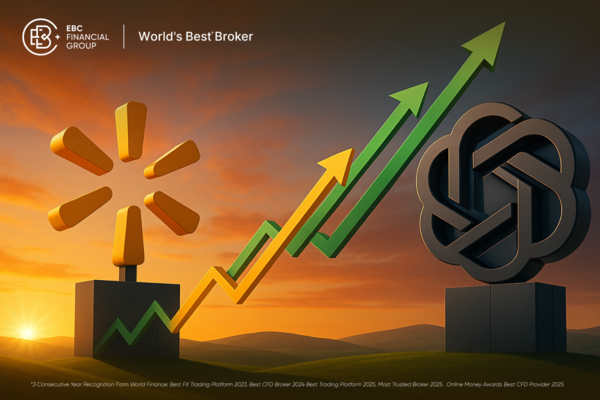Speculative risk is the possibility of either gain or loss that arises when you deliberately expose capital to uncertain price moves. Unlike pure risks (for example, theft or natural disasters) that carry only downside, speculative risks are voluntary and form the backbone of every trade you place. In effect, every click of the "Buy" or "Sell" button is an acceptance of speculative risk in pursuit of profit.
Mapping the Spectrum of Speculative Risk Across Major Asset Classes
 Equities – Blue‑chip shares often carry lower beta and steadier earnings visibility, but IPOs and small‑cap "story stocks" can swing violently on sentiment and news flow.
Equities – Blue‑chip shares often carry lower beta and steadier earnings visibility, but IPOs and small‑cap "story stocks" can swing violently on sentiment and news flow.
Commodities – Prices hinge on weather, geopolitics, and inventory cycles. Leverage in futures amplifies both gains and drawdowns.
Currencies – Even the most liquid pairs can gap on central‑bank surprises; exotics compound that risk with thinner order books.
Cryptocurrencies – Twenty‑four‑hour markets with limited fundamental anchors: headline risk, exchange outages, and regulatory shifts can all trigger double‑digit intraday moves.
Derivatives (options, CFDs, futures) – Embedded leverage means a modest underlying move can wipe out an entire margin deposit—or double it—within minutes.
For traders, understanding where each instrument sits on this spectrum is the first line of defence.
Measuring Risk: Beta, Value‑at‑Risk, Implied Volatility & the Greeks
Beta, Value‑at‑Risk, Implied Volatility & the Greeks
| Metric |
What It Tells You |
Typical Use‑Case |
| Beta |
Sensitivity of a security's returns to the broad market |
Selecting higher‑beta names for momentum trades or low‑beta names for defensive hedges |
| Value‑at‑Risk (VaR) |
The worst‑case loss you expect not to exceed (e.g., 95 % confidence) over a set period |
Portfolio‑level capital allocation and regulatory reporting Investopedia |
| Implied Volatility (IV) |
The market's forward‑looking estimate of price swings baked into option premiums |
Timing option buys/sells; gauging "fear" via the VIX |
| Option Greeks (Δ, Γ, Θ, Vega, Rho) |
Directional, convexity, time‑decay, volatility, and rate sensitivities |
Fine‑tuning complex spreads; delta‑hedging books in real time |
No single yardstick is sufficient; combining them offers a multifaceted view of exposure.
Risk‑Control Tactics: Hedging, Position‑Sizing & Layered Stop‑Losses
Hedging: Offsetting long EUR/USD with a correlated short, buying put options against a long equity basket, or running calendar spreads in crude oil futures can cap tail risk without exiting a core view.
Optimal Position‑Sizing: Many professional traders cap single‑trade risk at 1‑2 % of account equity, adjusting size for volatility (e.g., using ATR or option Vega) to achieve a constant "dollar at risk".
Layered Stop‑Losses: A tight initial stop guards against immediate adversity, while deeper "catastrophic" stops and trailing exits allow positions to breathe and capture trends, reducing the chance of whipsaw while still defining downside.
Together, these techniques form a complementary safety net rather than a pick‑one menu.
Behavioural Pitfalls That Magnify Speculative Exposure
Fear of Missing Out (FOMO) – Chasing parabolic moves often leads to buying tops and ignoring pre‑defined risk limits.
Anchoring & Recency Bias – Fixating on an entry price or the latest headline can blind you to new information.
Overconfidence – A string of wins may tempt you to double or triple size—just before volatility reverts.
Awareness is half the battle; codifying rules that counteract these biases (e.g., cooling‑off periods after large wins or losses) is the other half.
Building a Personal Trading plan to Keep Speculative Risk in Check
A robust trading plan functions like a flight manual: it pre‑authorises actions for every common market scenario, minimising emotional overrides at the worst moments. Core sections should include:
Objectives & Time‑Horizon – Define whether you're day‑trading Bund futures or swing‑trading NASDAQ options.
Instrument Universe & Set‑ups – List criteria for trade entry (e.g., breakout above 50‑day moving average on 150 % of average volume).
Risk Limits – Daily loss caps, maximum portfolio VaR, leverage ceilings, and maximum position beta.
Execution & Exits – Pre‑planned stop distances, profit targets, and adjustment triggers (e.g., trail stop to break‑even after 1 R).
Review Cycle – End‑of‑day journalling, weekly P/L attribution, quarterly strategy audits.
Treat the plan as a living document—update it whenever market conditions, personal capital, or psychological tolerance changes.
Conclusion – Turning Uncertainty into Calculated Opportunity
Speculative risk is inseparable from trading, but it need not be a leap into the unknown. By measuring exposure with objective metrics, controlling it through disciplined tactics, and reviewing behaviour within a structured plan, you convert raw uncertainty into a series of calculated choices. Mastery lies not in avoiding risk altogether, but in ensuring every risk taken is intentional, sized correctly, and continuously monitored—so the inevitable losses are survivable and the gains can compound.
Disclaimer: This material is for general information purposes only and is not intended as (and should not be considered to be) financial, investment or other advice on which reliance should be placed. No opinion given in the material constitutes a recommendation by EBC or the author that any particular investment, security, transaction or investment strategy is suitable for any specific person.



 Equities – Blue‑chip shares often carry lower beta and steadier earnings visibility, but IPOs and small‑cap "story stocks" can swing violently on sentiment and news flow.
Equities – Blue‑chip shares often carry lower beta and steadier earnings visibility, but IPOs and small‑cap "story stocks" can swing violently on sentiment and news flow.

















